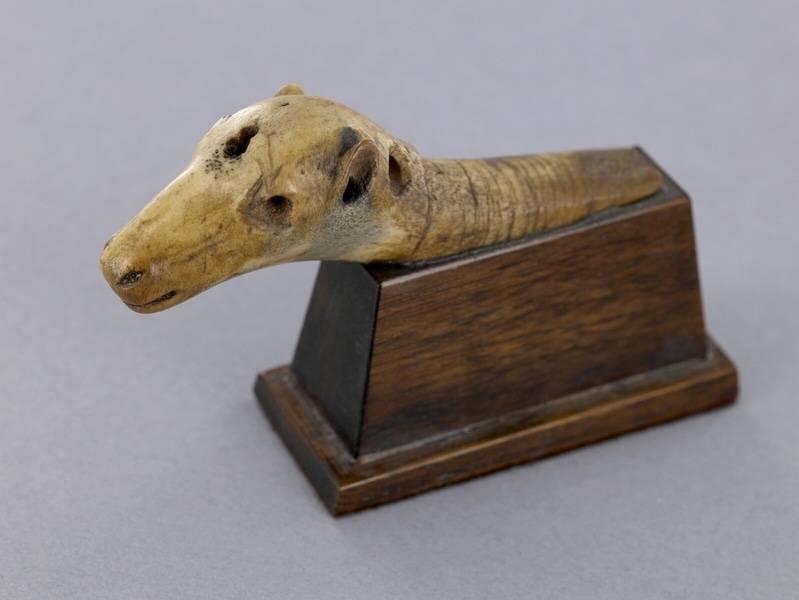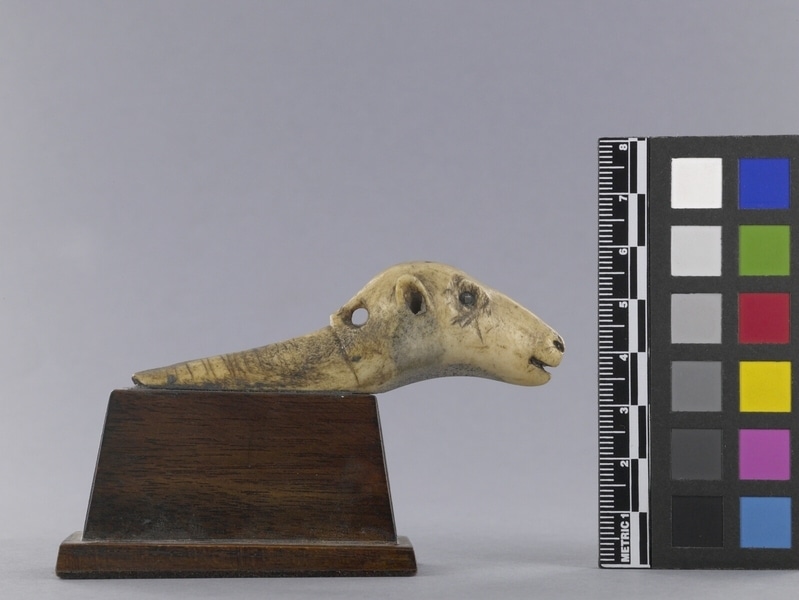Quiver Rod Cap Item Number: Na1101 from the MOA: University of British Columbia




Description
Female caribou head with neck tapering in wedge shape. Mouth and nostrils are well defined at end of muzzle. Eyes on each side, one has remains of wooden plug. Oval ears in relief with deep canals. Hole drilled through at back of head. Numerous lines across neck.
History Of Use
Part of a quiver rod used to stiffen a sealskin quiver so that it would retain its shape when arrows are removed. The hole at the back of the cap is for attaching a thong to attach it to the quiver rod. Traditionally, the sinew backed bow and various types of arrows were used for hunting birds, herd animals, bears and wolves, etc. By 1850, firearms supplemented and eventually replaced these traditional weapons.
Cultural Context
hunting
Narrative
Identification of walrus tusk 'ivory' is based on the configuration of mottled secondary dentine. This piece is very similar to a piece found at Point Barrow (Murdock p.209). The cap has been attached to a wooden stand so that the underside is not visible.
Item History
- Made in Alaska, USA
- Owned by Marianne Koerner and Walter C. Koerner before January 8, 1981
- Received from Marianne Koerner (Donor) and Walter C. Koerner (Donor) on January 8, 1981
What
Who
- Culture
- Inuit
- Previous Owner
- Marianne Koerner and Walter C. Koerner
- Received from
- Marianne Koerner (Donor) and Walter C. Koerner (Donor)
Where
- Holding Institution
- MOA: University of British Columbia
- Made in
- Alaska, USA
When
- Ownership Date
- before January 8, 1981
- Acquisition Date
- on January 8, 1981
Other
- Condition
- good
- Current Location
- Case 51
- Accession Number
- 0697/0022